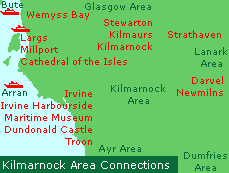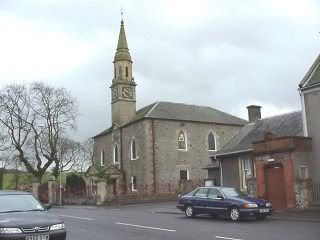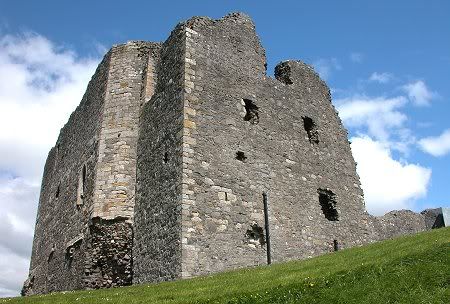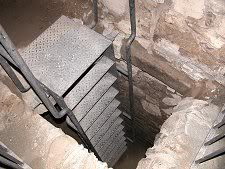Dundonald

A country village , but steeped in history. The current castle was built by Robert II in 1371, but in fact the site was a hill fort between 500 and 200BC. Three medieval castles were built on the site between the early 12th century and 1647.

The current castle was used as a summer residence of the Scottish Kings.

History of Dundonald Castle
Dundonald Castle is a fortified tower house built for Robert II on his accession to the throne of Scotland in 1371 and it was used as a royal residence by the early Stewart kings for the next 150 years. It was said to be Robert II's favourite residence and it was here that he died in 1390.
Recent excavations by Historic Scotland revealed the remains of a succession of settlements and fortifications on the Castle Hill dating back to the Stone Age. It also appears that the present Castle was built on the remains of an earlier stone castle built in the 13th century by the High Steward of Scotland as part of the country's defences against the Vikings. Remnants of that earlier castle can be seen in the fabric of the present building.
The High Stewards occupied Dundonald Castle from the mid 12th century and with the accession of Robert II this family gave rise to the Stewart Dynasty that ruled Scotland and later Great Britain for 350 years. Although the Great Hall on the top floor is now roofless, the Lower Hall features a fine example of a medieval barrel-vaulted ceiling, and there is a small dungeon with an obliette below it. Outside, the western wall of the castle features 5 stone carved heraldic shields which are among the oldest in the country.
All parts of the castle are accessible to the reasonably fit, but the visit does involve a climb of about 30 metres up a winding path to the top of the castle hill. On a clear day the hill commands very extensive views, including the Isle of Arran, the mountains of the Southern Highlands and much of the central Ayrshire plain.
The hill on which Dundonald stands has a been occupied since around 2000 BCE. The first hill fort was built around 500 - 200 BCE and remained in use until around 1000 AD. The first castle on the site, of which nothing survives, was a 'motte and bailey' of timber construction built around the mid 12th century, probably by Walter Stewart, first Steward of Scotland.
It was replaced in the late 13th century by a much larger stone castle consisting of two large blocks facing each other across a circular courtyard and four round towers at intervals in a high curtain wall.
Each of the two main blocks were also fronted by round towers and the base of one of these can be seen in the north wall of the present structure, and the old arched entrance can be seen in the wall of the lower vault. The castle was destroyed in the early 14th century during the wars with England.
The present ruin was built in the latter half of the 14th century by King Robert II, who died here in 1390. The main block consisted of two pointed barrel vaults, the lower one was split to form two floors.
The ground floor was for storage, it has an entrance (current) in the east wall and mural stair in the north wall led to the service area of the laigh or lower hall on the first floor. There was a minstrel's gallery, with its own latrine, above the service area.
Today entry is by the service entrance on the ground floor but the principal entrance was at first floor level and would have been reached by movable staircase.
From the first floor a turnpike stair in the south-east angle, now replaced with a metal one, gave access to the upper vault which formed the great hall, and to the parapet above.
The great hall had an elaborate ribbed vault, with transverse and diagonal ribs. These were a purely decorative feature and did not support the vault.
There was a canopied fireplace in the west wall but this has now gone. At the south end of the hall a service area would have been screened from the main room, there is also a wall closet at this end. At the north end, the dias end, a pointed doorway leads to two wall closets, one containing a latrine. A small area of ribbed vault survives above the entrance to the great hall.
Strangely the tower was built without any bedrooms or any other chambers. This was quickly resolved with the construction of an extension to the south. The ground floor of the extension contained a bakehouse, and small prison with its own fireplace and drain. Below the prison is a pit, there were no such luxuries down there.
King James III sold Dundonald estate to the Cathcarts in 1482, it then passed to the Wallaces in 1526 but was in ruins by the end of the 17th century.
Dundonald is now in the care of Historic Scotland and managed by the Friends of Dundonald Castle, it is open daily between April and September, there is also a tea-room and visitor centre.
"The present Castle was built on the remains of an earlier stone castle built in the 13th century"

the Pit Dungeons